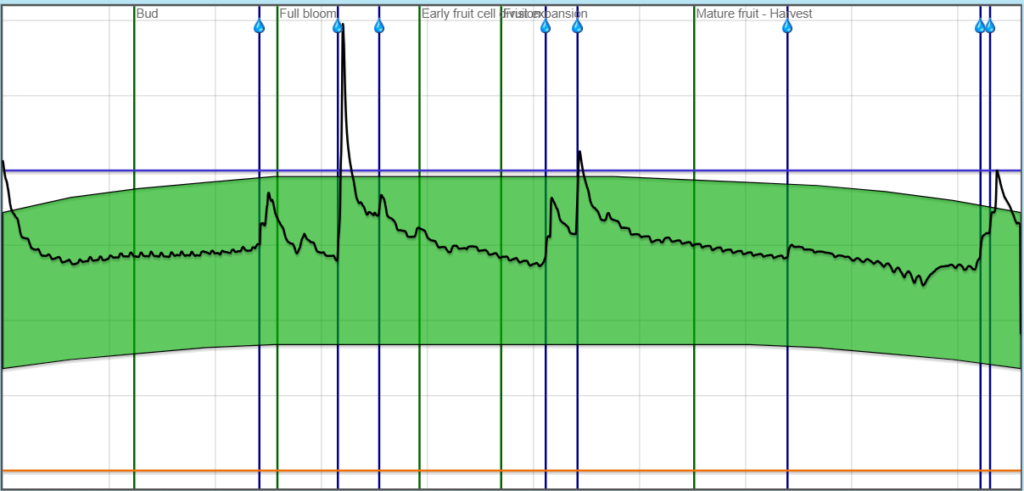Cotton growers increase profitability by monitoring soil moisture and salinity
Cotton is a unique crop with specific demands for temperature, moisture, and salinity levels that require careful attention throughout the season. And since it’s often grown in hot regions where water may be a scarce resource, efficiency is key. Below ground technology can provide actionable insights that make irrigation timing more efficient and timely. Layer by layer insights into temperature, moisture, salinity and crop consumption changes can the game for cotton growers.
Intelligent Technology Aids Monitoring the Health of Cotton Crops
To maximize yield, cotton growers need a complete picture of crop health, soil temperature, moisture and salinity. These should be monitored at regular intervals to a soil depth that includes the bulk of the crop roots which is typically within 3 feet of the soil surface though roots can go as deep at 9 feet or more. Seeing water uptake layer by layer can give growers an indicator of how deep the roots have penetrated, by which they can gauge the overall vigor of the plants. If they have to irrigate with water that has a high salt content, they want to see the increase in salinity in the soil at each level so they can take measure to mitigate excess salinity where necessary.
Cotton growers can save time and trips to the field by using wireless cellular-connected services with monitoring devices installed beneath the ground in the field once per season. Then they can remotely monitor their crops on the device of their choice for real-time field information.
Improving Irrigation Efficiency in Cotton Crops
Crophesy™ battery-operated below ground soil moisture probes by AquaSpy® have an intelligent soil and root deciphering algorithm that accurately predicts crop health and yield throughout the cotton growing season.
Crophesy has an easy pay as you grow service subscription that’s worry and hassle-free. Each subscription includes the mobile app, AgSpy software, one wireless battery-powered underground multi–sensor probe, wireless data plan, analytics and reporting. Crophesy hardware is completely integrated and wireless, with no cords or towers required. Installation is fast and easy and takes just minutes.
Crophesy Pay-As-You-Grow Service
With Crophesy, cotton growers can use a smartphone, tablet or desktop device to remotely monitor cotton plants and instantly see stats on soil moisture, soil density, salinity, and temperature, as well as water infiltration and consumption.
Crophesy 3-, 6- and 12-sensor wireless soil moisture monitoring probes placed throughout fields give growers a broad, field level view with crop-specific insights about soil and crop health, every four inches. No adjustments needed. Works for any soil type.
Data is automatically interpreted through sophisticated statistical algorithms and then uploaded to the Crophesy Mobile App. Download the Crophesy Mobile App from the Apple App Store (iOS) or Google Play Store (Android). Use the app daily to receive notices about where you need to focus your attention.
Crophesy’s subscription plan gives growers the flexibility and peace of mind to manage the service according to their unique growing environment, crop rotation, and seasonality.
To irrigate more efficiently and improve your cotton profitability, check out Crophesy by AquaSpy.











